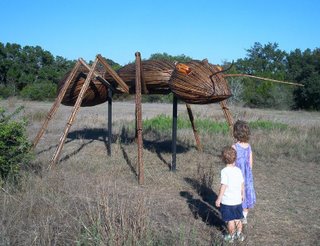My personal question of the day that I Googled an answer for was "What are the pesticide residue levels in orange juice?"
The answers that I came up with were:
"Six foods had very low TI's (10 or less) each time they were tested: Frozen/canned corn, milk, U.S. orange juice, U.S. broccoli, bananas, and canned peaches. Not quite as low, but still relatively "clean," were frozen/canned sweet peas, U.S. and imported apple juice, frozen winter squash from Mexico, tomatoes from Canada, Brazilian orange juice, and U.S. wheat." From http://www.annieappleseedproject.org/pesresinfood.html
"Pesticides are not the only contaminants in food that may affect children's health adversely. Industrial contaminants (such as dioxins, PCBs, and mercury), microbial contaminants (such as E. coli), and natural contaminants (such as aflatoxin) also can be found in foods. The Pesticide Data Program does not analyze foods for the presence of these types of contaminants, although other government programs monitor for some of them." From http://yosemite.epa.gov/ochp/ochpweb.nsf/content/food_contam.htm
"9 Pesticide Residues Found by the USDA Pesticide Data Program" From http://www.whatsonmyfood.org/food.jsp?food=OJ I'm going to bookmark this website for future reference, it's fantastic!
"· U.S.-grown produce generally is more likely to have higher residues than imported fruits and vegetables. There are a few significant exceptions - such as tomatoes grown in Mexico - but the data do not support the stereotype that imports have worse pesticide problems than domestic produce.
· Organochlorine pesticides banned in the 1970s still show up in foods that kids eat today. For instance, dieldrin remains in soil, and crops such as squash, cantaloupe, soybeans, sweet potatoes and spinach contain significant residues. Although its use is banned, FDA "action levels" permit dieldrin residues in foods that are higher than the EPA says is "safe."
· Chlorpyrifos, an organophosphate insecticide, was detected in 22 foods the PDP tested from 1994 through 1998. The highest chlorpyrifos residues show up in apples from New Zealand, grapes from Chile, tomatoes from Mexico, and domestically grown soybeans." From http://www.consumersunion.org/pub/core_food_safety/002324.html
I'm not sure how to interpret the information from this site but it's good for searching a WIDE variety of food items for pesticides http://www.codexalimentarius.net/mrls/pestdes/jsp/pest_q-e.jsp
The motherload of info on orange juice! http://www.amazon.com/Squeezed-About-Orange-Agrarian-Studies/dp/0300164556/ref=sr_1_1?ie=UTF8&s=books&qid=1275925384&sr=8-1 "The flavor is sourced from all parts of oranges everywhere…Typically, the orange oils and essences that juice concentrators collect during evaporation are sold to flavor manufacturers, who then reconfigure these by-products…into ‘flavor packs’ for reintroduction into orange juice."
"despite what advertisers claim, most orange juice is neither fresh nor natural (not in the way most of us would define those terms). Think about it; how could it be truly fresh year-round, when oranges are a seasonal product? Sure, it may be “not from concentrate,” but raw juice is often heated, stripped of its volatile compounds and flavor-rich oils, and stored for as long as a year before it reaches the consumer. Something called “the flavor pack” is used to return most of the “natural” aroma and taste to the product." From http://blogs.smithsonianmag.com/food/2010/04/27/squeezed-the-secrets-of-the-orange-juice-industry/
and the final hit from the first page of Google returns:
"Many parents depend on apple juice as a staple in their children’s meals and snacks away from home. However, apples are one of the Dirty Dozen. Washing and peeling do not remove pesticide residue. As a result, you can expect that any apple juice made from conventionally grown apples will also contain higher pesticide residues. A simple switch to orange juice will reduce the amount of pesticides going into growing bodies, with a healthy dose of vitamin C included." From http://hubpages.com/hub/Five-Easy-Ways-to-Reduce-Your-Familys-Pesticide-consumption
And an interesting personal note -
Last month several cartons of the orange juice that we normally get (HEB Groves Choice Lots of Pulp not from concentrate) had a definite tangerine or truly fresh-squeezed taste to them. It's a taste I normally equate with our homemade fresh orange juice made from oranges from The Valley in mid-winter which is when they are actually ripe for the picking. It was GOOD! So either it was from 6-month-old US stock from the winter and just now hitting the shelves or it was new stock from South America where it's now becoming mid-winter.
16 hours ago

No comments:
Post a Comment